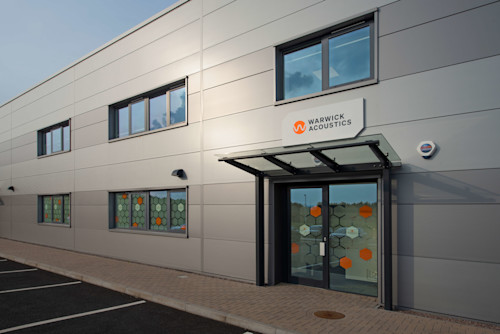
APERIO
Technology
Technology
Explore the state-of-the-art engineering behind the APERIO's miraculously pure sound.
BD-HPEL transducer
The performance of any headphone system is determined by the performance of its transducer. The APERIO uses a Balanced-Drive High Precision Electrostatic Laminate (BD-HPEL) - a symmetrically driven variant of our era-defining HPEL technology. This new generation provides twice the excursion capability of the original along with greater linearity and lower distortion.
'Open' ear cups
Magnesium is the ideal material to house our BD-HPEL transducer, as it weighs about 33% less than aluminium and has superior acoustical damping. By injecting the magnesium, we can use it to create complex and precise components without the need for CNC machining. The result? A mechanical design that is extremely rigid, well-damped and resonance-free. Another distinctive feature of the earcups is their open design. Unlike other headphones, the APERIO keeps the materials around the transducer to a minimum, so there is nothing to impede the airflow or impair the quality of the sound.
Ear cushions
The APERIO's ear cushions are designed for optimal performance and comfort. Acoustically absorbent foam keeps resonances to a minimum while key design features maintain a perfectly sealed air volume to ensure outstanding low frequency performance. The ear cushions are covered in the finest, sustainably sourced cabretta leather. To keep you cool while you're listening, we've included perforated top surfaces and a copper thread mesh that dissipates heat.
Headphone comfort
Made from magnesium, engineering polymers and other advanced materials, the APERIO headphone weighs just 405 grams and can be adjusted to sit firmly but comfortably on anybody's head. For your safety, the transducer is electrically isolated from the magnesium components and the body of the headphone is electrically grounded. The internal wiring is insulated with high-voltage silicone and Teflon.
Cutting-edge components
From high-voltage discrete transistors to 0.5% tolerance metal film resistors, every element of the APERIO's electronics is designed for superior audio performance.
All analogue circuitry and PCB routing is differential (balanced), with gain levels carefully optimised between all stages to maximise signal-to-noise ratio (SNR). The simplified topology ensures the audio signal passes through as few stages and devices as possible - and never through internal cables, panel switches or potentiometers. All circuitry is dual mono to minimise crosstalk and interference between channels.
To minimise mechanical resonances and vibrational energy, the aluminium chassis sections are fastened together using stainless steel hardware with thread-locking compounds that will not loosen over time. The complete assembly is isolated from external shock and vibration via specialised mounting feet that are formed of a highly damped thermoplastic compound (IsoDamp C-1002).
Analogue line output
We've included a novel Class A circuit that can output very high voltages with prodigious current. It means you can connect to any professional or consumer application without distortion, even if you're using cables that are 150 metres long.
Dual 32-bit, 8-channel DACs
The APERIO transforms your music files into sound waves using state-of-the-art digital-to-analogue converters (DACs). These can achieve an exceptional signal-to-noise ratio (SNR) of 131 dB. To prevent any loss in audio quality, the system also features a unique dual-domain level control, with separate attenuators for analogue and digital signals.
Input cables
The APERIO comes with custom USB 2.0 and ethernet cables, which have been designed to be impervious to noise, interference and emissions. Both use superior SF/FTP construction with double overall shielding (aluminium-mylar foil and copper-plated Aramid fibre braiding). The conductor wiring is formed of 66 strands of micro-fine OFHC copper, each one plated in pure silver.


